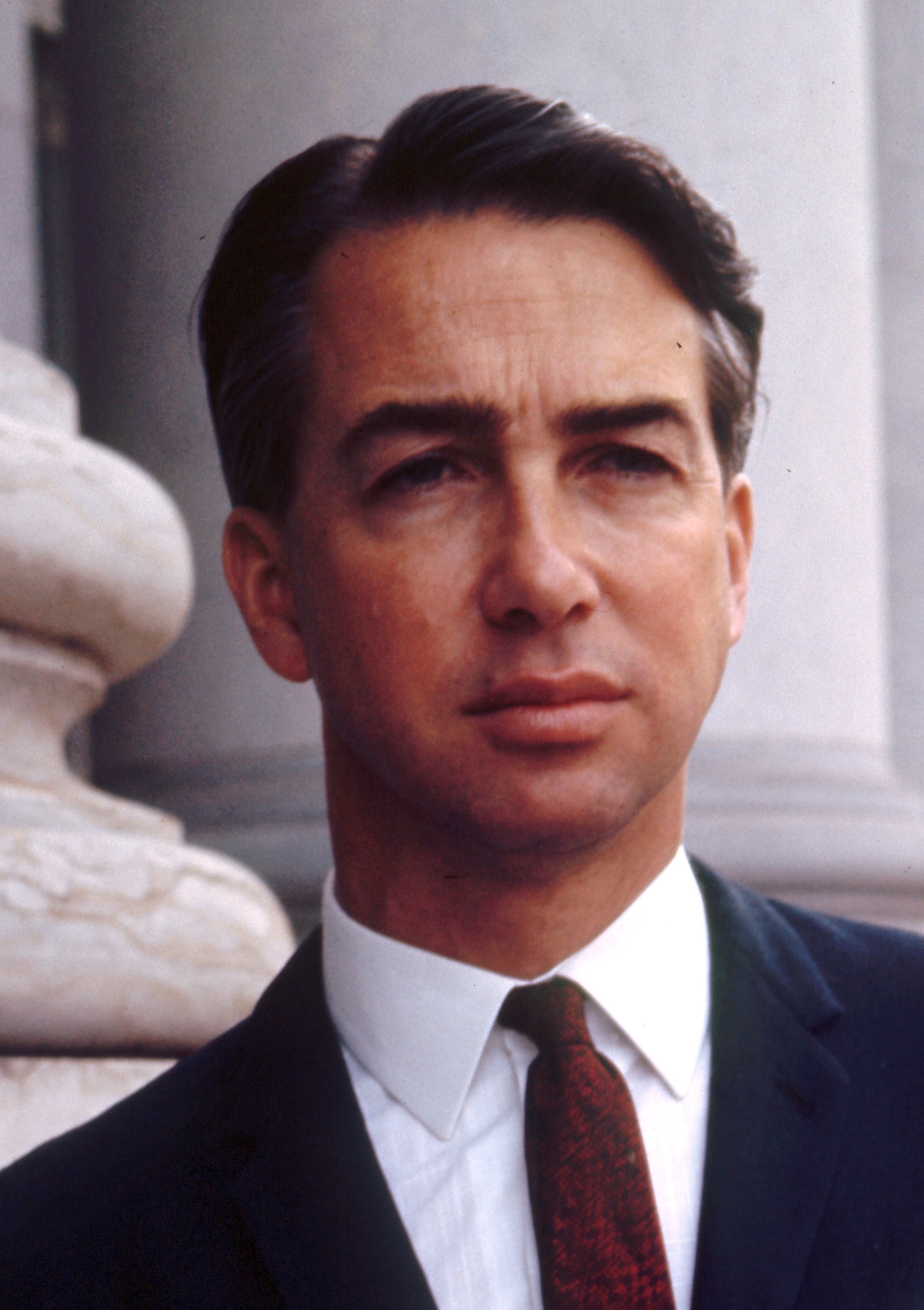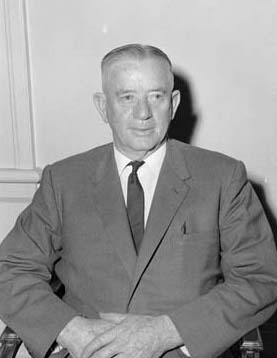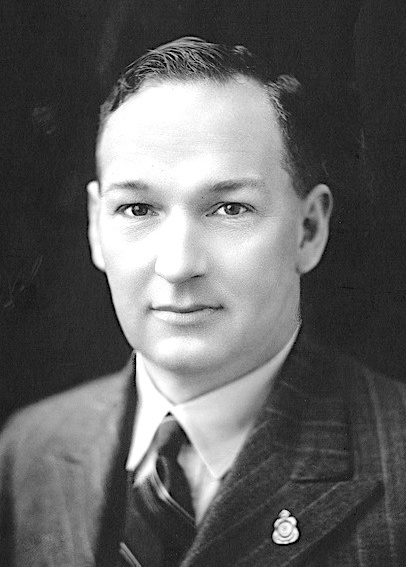|
Electoral District Of Chaffey
Chaffey, created in 1936, is a single-member Electoral districts of South Australia, electoral district for the South Australian House of Assembly. It covers the Riverland region of South Australia including the towns of Renmark, South Australia, Renmark, Berri, South Australia, Berri, Barmera, South Australia, Barmera, Loxton, South Australia, Loxton and Waikerie, South Australia, Waikerie. The seat is named after brothers George Chaffey, George and William Chaffey who established the irrigation area along the Murray River from 1886. Chaffey spent most of the Playmander era in the hands of independent William MacGillivray (politician), William MacGillivray. The Liberal and Country League did not win it until 1956 South Australian state election, 1956. Chaffey was won three times by Australian Labor Party (South Australian Branch), Labor's Reg Curren as their most marginal electorate on a Two-party-preferred vote, two-party-preferred basis – in 1962 South Australian state elect ... [...More Info...] [...Related Items...] OR: [Wikipedia] [Google] [Baidu] |
Tim Whetstone
Timothy John Whetstone (born 5 March 1960) is an Australian politician representing the seat of Chaffey in the South Australian House of Assembly for the South Australian Division of the Liberal Party of Australia since the 2010 election. Whetstone served as the Minister for Primary Industries and Regional Development in the Marshall Ministry from 22 March 2018. He resigned from cabinet on 26 July 2020 after a scandal over parliamentary allowances, which he was subsequently cleared of on 15 October 2020. Background and early career Whetstone was born in the state's South East at Keith before completing his schooling in Adelaide. He finished a tool maker apprenticeship at General Motors Holden and later went on to develop his own small business building and restoring muscle cars and speedboats. Whestone was a project manager on the Moomba gas fields before moving to the Riverland in 1989 to purchase a citrus property and develop a vineyard on the River Murray. In the late 19 ... [...More Info...] [...Related Items...] OR: [Wikipedia] [Google] [Baidu] |
Loxton, South Australia
Loxton is a town on the south bank of the River Murray in the Riverland region of South Australia. It is located on the lands of the Erawirung people who occupied the area before the arrival of Europeans. It is a service town for the surrounding districts. Loxton's primary productions are agriculture and horticulture. Citrus fruit, wine grapes, almonds, and stone fruit trees are prevalent. Loxton is also the main town for the northern part of the Murray Mallee which is a dryland farming and cereal, grain cropping area. Loxton High School provides secondary education for the area. Loxton has a pioneer settlement museum (known as the Loxton Historical Village), preserving the heritage of the mallee region. It is also famous for the "Loxton Lights Up" Christmas Festival in December each year, and the annual 120m Loxton Gift handicap sprint race held in late February. The town hosts the second round of the Australian HPV Super Series in May annually. Loxton is the seat of the Loc ... [...More Info...] [...Related Items...] OR: [Wikipedia] [Google] [Baidu] |
Peter Arnold (politician)
Peter Bruce Arnold (21 December 1935 – 23 October 2024) was an Australian politician who represented the South Australian House of Assembly seat of Chaffey for the Liberal and Country League and Liberal Party The Liberal Party is any of many political parties around the world. The meaning of ''liberal'' varies around the world, ranging from liberal conservatism on the right to social liberalism on the left. For example, while the political systems ... from 1968 to 1970 and 1973 to 1993. He was appointed to the Parliamentary Standing Committee on Public Works and later on the Environment, Resources and Development Committee. Arnold was born on 21 December 1935, and died on 23 October 2024, at the age of 88. References 1935 births 2024 deaths Liberal Party of Australia members of the Parliament of South Australia Members of the South Australian House of Assembly Liberal and Country League politicians {{Australia-Liberal-politic ... [...More Info...] [...Related Items...] OR: [Wikipedia] [Google] [Baidu] |
1970 South Australian State Election
State elections were held in South Australia on 30 May 1970. All 47 seats in the South Australian House of Assembly were up for election. The incumbent Liberal and Country League led by Premier of South Australia Steele Hall was defeated by the Australian Labor Party led by Leader of the Opposition Don Dunstan. Background The LCL had formed the government of South Australia for 35 of the previous 38 years due to a malapportionment favouring country areas over the Adelaide area. Deliberately inequitable electoral boundaries resulted in a country vote being worth twice a vote in Adelaide, even though Adelaide accounted for two-thirds of the state's population. This system was popularly known as the "Playmander," since it allowed Thomas Playford to remain Premier of South Australia for 26 years. In the latter part of Playford's tenure, the LCL could only hope to win a few seats in Adelaide. However, the LCL's grip on the country areas was such that it was able to retain power w ... [...More Info...] [...Related Items...] OR: [Wikipedia] [Google] [Baidu] |
1965 South Australian State Election
State elections were held in South Australia on 6 March 1965. All 39 seats in the South Australian House of Assembly were up for election. The incumbent Liberal and Country League led by Premier of South Australia Thomas Playford IV, in power since 1938, was defeated by the Australian Labor Party led by Leader of the Opposition Frank Walsh. Background Even though Labor won the 1944, 1953 and 1962 elections on the two-party vote against Thomas Playford IV and the Liberal and Country League (LCL), the electoral rural overweighting known as the Playmander since 1936 locked them out of power due to 26 rural districts enjoying a 2-to-1 advantage over the 13 Adelaide-based districts. Labor's statewide two-party at the 1965 election remained unchanged at 54.3 percent, which would have been enough for a strong majority government in most of the rest of Australia. However, due to the rural overweighting, Labor scraped into office by just two seats, the only time it won government during t ... [...More Info...] [...Related Items...] OR: [Wikipedia] [Google] [Baidu] |
1962 South Australian State Election
State elections were held in South Australia on 3 March 1962. All 39 seats in the South Australian House of Assembly were up for election. The incumbent Liberal and Country League led by Premier of South Australia Thomas Playford IV defeated the Australian Labor Party led by Leader of the Opposition Frank Walsh. This was the first and only time that a South Australian Government won a tenth consecutive term in office. Background The Playford government, in power since 1938, went into the 1962 elections in a precarious position. At the time the writs were issued, South Australia was dogged by a massive recession. This led observers to think that Labor would finally have a chance at power; longtime opposition leader Mick O'Halloran had died suddenly in 1960, and Labor was led into the election by former deputy leader Frank Walsh. The Labor opposition won in excess of 54 percent of the statewide two-party vote, however the LCL retained government with the assistance of the Play ... [...More Info...] [...Related Items...] OR: [Wikipedia] [Google] [Baidu] |
Two-party-preferred Vote
In Australian politics, the two-party-preferred vote (TPP or 2PP), is the result of an opinion poll or a projection of an election result where preferences are distributed to one of the two major parties, the Labor Party and the Liberal/National Coalition e.g. "Coalition 50%, Labor 50%. The preference distribution is usually based upon the results of the last election, and the votes for other candidates are distributed between to the two parties. As such the TPP is a rough indicator of voting intent that focuses on determining the likely majority in the lower house. It is compared to previous values to predict the swing and hence the likelihood of a change in government between the major parties. The TPP assumes a two-party system of government, i.e. that after distribution of votes from less successful candidates, the two remaining candidates will be from each of the two major parties. It provides no indication of the number of representatives of other parties or independe ... [...More Info...] [...Related Items...] OR: [Wikipedia] [Google] [Baidu] |
Reg Curren
Arthur Reginald Curren (27 June 1914 – 25 September 1996) was an Australian politician who represented the South Australian House of Assembly The House of Assembly (also known as the lower house) is one of two chambers of the Parliament of South Australia, the other being the Legislative Council. It sits in Parliament House in the state capital, Adelaide. Overview The House of Assem ... seat of Chaffey for the Labor Party from 1962 to 1968 and 1970 to 1973. References 1914 births 1996 deaths Members of the South Australian House of Assembly 20th-century Australian politicians Australian Labor Party members of the Parliament of South Australia {{Australia-Labor-politician-stub ... [...More Info...] [...Related Items...] OR: [Wikipedia] [Google] [Baidu] |
Australian Labor Party (South Australian Branch)
The South Australian Labor Party, officially known as the Australian Labor Party (South Australian Branch) and commonly referred to simply as South Australian Labor, is the South Australian Branch of the Australian Labor Party, originally formed in 1891 as the United Labor Party of South Australia. It is one of two major parties in the bicameral Parliament of South Australia, the other being the South Australian Liberal Party. Since the 1970 election, marking the beginning of democratic fair representation ( one vote, one value) and ending decades of pro-rural electoral malapportionment known as the Playmander, Labor have won 11 of the 15 elections. Spanning 16 years and 4 terms, Labor was last in government from the 2002 election until the 2018 election. Jay Weatherill led the Labor government since a 2011 leadership change from Mike Rann. During 2013 it became the longest-serving state Labor government in South Australian history, and in addition went on to win a four ... [...More Info...] [...Related Items...] OR: [Wikipedia] [Google] [Baidu] |
1956 South Australian State Election
State elections were held in South Australia on 3 March 1956. All 39 seats in the South Australian House of Assembly were up for election. The incumbent Liberal and Country League led by Premier of South Australia Thomas Playford IV defeated the Australian Labor Party led by Leader of the Opposition Mick O'Halloran. A redistribution occurred in 1955 based upon the results of the census held in June 1954. Background Labor won one seat, rural Murray from the LCL. The LCL won two seats, rural Wallaroo from Labor and rural Chaffey from an independent. An independent won one seat, rural Burra from the LCL. Results * The primary vote figures were from contested seats, while the state-wide two-party-preferred vote figures were estimated from all seats. [...More Info...] [...Related Items...] OR: [Wikipedia] [Google] [Baidu] |
Liberal And Country League
The South Australian Liberal Party, officially known as the Liberal Party of Australia (South Australian Division), and often shortened to SA Liberals, is the South Australian Division of the Liberal Party of Australia. It was formed as the Liberal and Country League (LCL) in 1932 and became the South Australian Division of the Liberal Party when the Liberal Party was formed in 1945. It retained its Liberal and Country League name before changing to its current name in 1974. It is one of two major parties in the bicameral Parliament of South Australia, the other being the Australian Labor Party (SA Branch). The party is led by Vincent Tarzia since 12 August 2024. During its 42-year existence as the Liberal and Country League, it spent 34 years in government, mainly due to an electoral malapportionment scheme known as the Playmander. The Playmander was named after LCL leader Sir Tom Playford, who was the Premier of South Australia for 27 years from 1938 until his election lo ... [...More Info...] [...Related Items...] OR: [Wikipedia] [Google] [Baidu] |
William MacGillivray (politician)
William MacGillivray (14 December 1891 – 15 November 1975) was an Australian politician. He was an independent member of the South Australian House of Assembly from 1938 to 1956, representing the electorate of Chaffey . MacGillivray was born at Inverness in Scotland, the son of a blacksmith. He fought with the Royal Horse Artillery in Egypt and Palestine during World War I, but suffered badly from malaria when he returned home. He migrated to South Australia in 1922, taking advantage of a free passage offered to returned soldiers and hoping that the climate would improve his health. He thereafter became a fruitgrower at Barmera. He also served as chairman of the District Council of Cobdogla. MacGillivray was elected to the Legislative Assembly at the 1938 election, at which independent candidates won 14 of 39 seats and 40 percent of the primary vote, more than either of the major parties. MacGillivray was eventually defeated by Liberal and Country League The South Aust ... [...More Info...] [...Related Items...] OR: [Wikipedia] [Google] [Baidu] |




